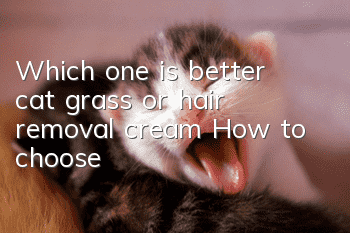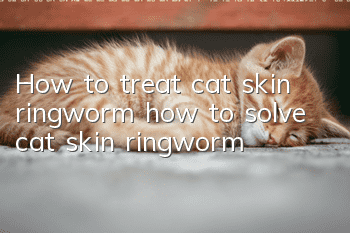How to treat Tonkinese cats with cat plague

Treatment methods for Tonkinese cats suffering from cat distemper:
1. Specific treatment can be to give Tonkinese cats a subcutaneous injection of anti-cat distemper virus high immunity in the neck. Serum and interferon. Hyperimmune serum can provide Tonkinese cats with antibodies, allowing the Tonkinese cat’s own immune system to overcome viral infections.
2. Supportive treatment mainly focuses on anti-inflammation, preventing dehydration, stopping bleeding, antivomiting, replenishing energy, balancing electrolytes, etc. based on the specific symptoms of Tonkinese cats.
3. When Tonkinese cats show symptoms of vomiting and diarrhea, they need to be injected with anti-vomiting and hemorrhage drugs. If there is an electrolyte imbalance or dehydration, the Tonkinese cat needs to be rehydrated in time.
The reasons why Tonkinese cats get cat plague:
1. Cat plague mostly occurs at the intersection of winter and spring when the seasonal environment is changeable and harsh. Various viruses are derived from time to time, and bad living habits can promote their outbreak. Cats of all ages can become infected with FPV, and it is more common in kittens under 1 year old, especially Tonkinese cats aged 3 to 5 months. most susceptible.
2. The main source of transmission of cat plague is infected cats and their excrement. For example, the feces, saliva, nasal mucus, eye feces and vomit of infected cats contain a large amount of viruses. The key is to recover after recovery. Cats also need to detoxify from their feces and urine for several weeks.
3. Tonkinese cats that have not been vaccinated or have not been vaccinated on time and whose antibody titer is not high are susceptible to feline distemper. Tonkinese cats that are incompletely or unvaccinated are prone to feline distemper.
- Are Scottish Fold cats easy to raise?
- What is the personality of Pomera cat?
- How soon after birth can a kitten be picked up?
- Why does a cat vomit white liquid?
- Why can't a cat open its eyes?
- What is the reason for a kitten’s hind legs to be weak and unsteady when walking?
- Can a female cat with feline nasal congestion pass it on to her kittens?
- How to care for a cat after falling from a building
- Is it really okay for cats to go to the toilet on the toilet? Is this reliable?
- Are there blue ragdoll cats?



